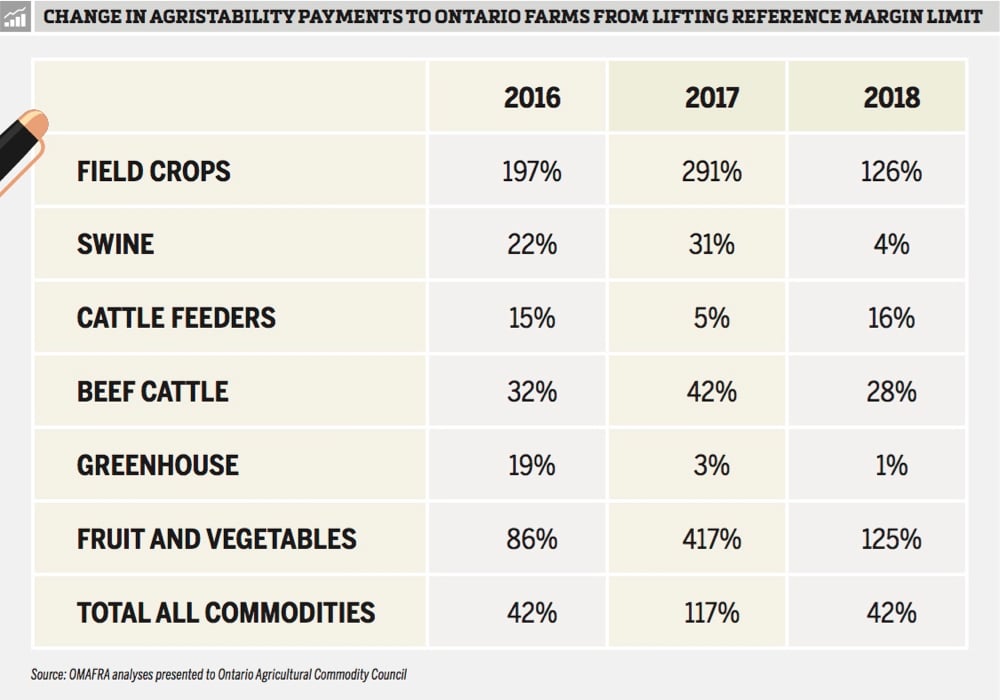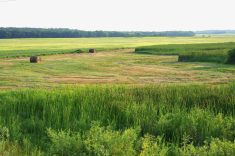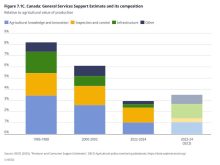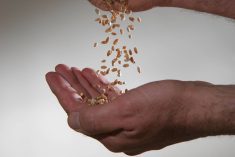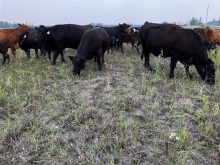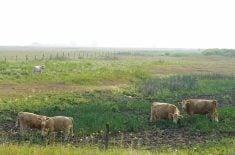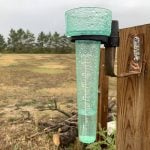Manitoba farm groups generally like the recently proposed improvements to the AgriStability program, but the provincial government is less positive.
The changes won’t be implemented unless a majority of provincial governments agree, including at least one from the Prairies, which some see as unlikely due to the extra cost.
Meanwhile, two agricultural economists say the federal plan would put more cash in farmers’ pockets and make AgriStability less complex and more predictable.
During the Nov. 27 online federal-provincial-territorial agriculture ministers’ meeting, federal Agriculture Minister Marie-Claude Bibeau proposed scrapping AgriStability’s unpopular reference margin limit and — when a payout is triggered — boosting compensation to 80 per cent of farmers’ historical margins, from the current 70.
She wants the changes applied retroactively to 2020 and to carry on in 2021 and 2022.

“We estimate that if all jurisdictions remove the reference margin limit that alone will increase the overall spending available to farmers through AgriStability by over 30 per cent,” Bibeau told reporters Nov. 27. “And if we also increase the compensation rate it would increase by more than 50 per cent. While I believe the compensation rate to be the next-best action to take, I’m prepared to consider other options. But before we have this discussion on additional improvements we have to agree on removing the reference margin limit.”
Bibeau’s changes will result in more AgriStability money flowing to farmers, Al Mussell, an economist with Agri-Food Economic Systems, said in an interview Dec. 2.
“But the fact remains if you can’t trigger a payment easily (because historical margins must decline to 70 per cent) the increase in coverage doesn’t do anything for you,” he said.
Read Also
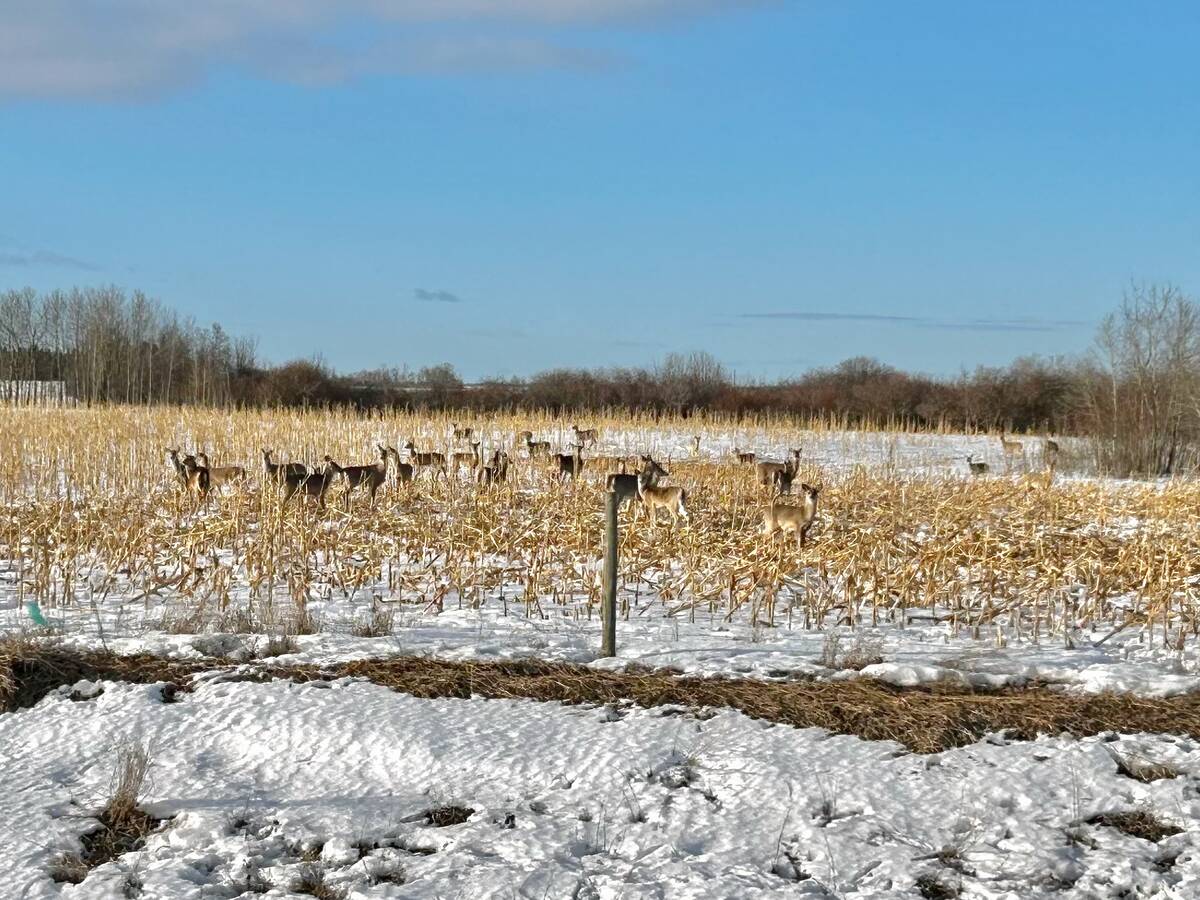
Manitoba launches CWD tracking tool
A newly launched digital dashboard allows hunters to track where chronic wasting disease has been confirmed in Manitoba
Why it matters: The federal government’s proposed AgriStability improvements include one farmers have sought for years — ending the reference margin limit. However, if a majority of provincial governments don’t endorse it, the proposal is DOA.
Farmers have been calling to end the reference margin limit since it was agreed to in 2012 under the Harper government.
At the time then KAP president Doug Chorney warned the reference margin limit would curtail AgriStability payouts because they would be based on either a farmer’s historical reference (five-year olympic average) margin or allowable expenses, whichever was lower.
Allowable expenses cover only 60 to 70 per cent of farmers’ operating costs and are usually lower than reference margins, he said.
“AgriStability, a program designed to stabilize farmers’ margins, is no longer a margin program,” Chorney said in an interview Sept. 14, 2012.
That same year Canada’s agriculture ministers also agreed to make it more difficult to trigger AgriStability payments, saying margins had to fall to 70 per cent, rather than 85 per cent.
Farmers want the 85 per cent trigger restored. While Bibeau’s plan doesn’t include that, it does propose that when a payment is triggered compensation jump to 80 per cent of historical margins from the current 70.
Before 2012 compensation was set at 60 per cent.
Under review
The Manitoba government is analyzing Bibeau’s proposal, including how much more it will cost the province, Agriculture and Resource Development Minister Blaine Pedersen told reporters by telephone Dec. 1.

“Right now Manitoba spends $150 million plus each year in terms of support for agriculture,” he said. “So it’s a substantial number. This AgriStability proposal… will cost Manitoba approximately $15 million (more) per year.”
He added the Prairie provinces will be the most affected, since agriculture is such a large slice of the provincial economies.
“The federal government has much more ability to finance this than the provinces,” Pedersen said.
Asked how likely Manitoba is to sign on, Pedersen said it was too soon to say.
“We will look at this very seriously, but I can’t give an indication of whether it’s a go or no go right now,” he said.
He said he’s concerned it doesn’t address other challenges like complexity, unreliability and delays before payments are received. Others think it does.
“Removing the RML (reference margin limit) also reduces the complexity and unpredictability of the program, at least marginally… ” Peter Slade, an agriculture economist from the University of Saskatchewan, said in an email Dec. 3.
What Bibeau is proposing will help farmers and improve AgriStability, KAP president Bill Campbell said in an interview Dec. 1. He says removing the reference margin and increasing coverage to 80 per cent will have an impact.
“Those two things would make it so it has the potential to make it a feasible program for the ag industry,” Campbell said.
“I think if some of the issues were addressed and fixed it wouldn’t necessarily be a broken program.”
As for delayed AgriStability payouts, that could be addressed through cash advances, which would presumably be more accurate if the reference margin limit is removed.
The provinces have also asked Ottawa to share more of the cost for farm programs, but Bibeau said it would remain 60 per cent federal, 40 per cent provincial.
Pedersen said he believes if the federal government spends more on AgriStability it will claw back the money through cuts to AgriInvest and AgriInsurance.
That’s the conclusion he reached after he says Bibeau told agriculture ministers farm support ‘payments are going to rich farmers only.’
Bibeau denies that’s her plan.
“What we are proposing is the complete opposite of robbing Peter to pay Paul,” she said in an email Dec. 3. “The proposal we put on the table seeks to enhance, not cut, business risk management programs.”
Meanwhile, Pedersen is exploring other farm support programs, including a margin-based insurance program.
Campbell is pleased Bibeau has finally put forward a concrete proposal to improve AgriStability, so negotiations can start, but frustrated it has taken so long.
Changing AgriStability requires support from two-thirds of the provinces, representing two-thirds of AgriStability participants. If all provinces, except Manitoba, Saskatchewan and Alberta agreed it would be close, but industry observers say the federal government would not move without at least one Prairie province on side.
Knowing that might have made it easier for Ottawa to make its offer, betting it was unlikely to be endorsed by Prairie governments.
When asked about that possibility Pedersen’s office said in an email “he cannot speculate on Bibeau’s’ intentions… ”
If the western provinces don’t come on board, Ottawa can claim it tried, demonstrating clearly to farm groups where they should focus their future lobbying efforts.



